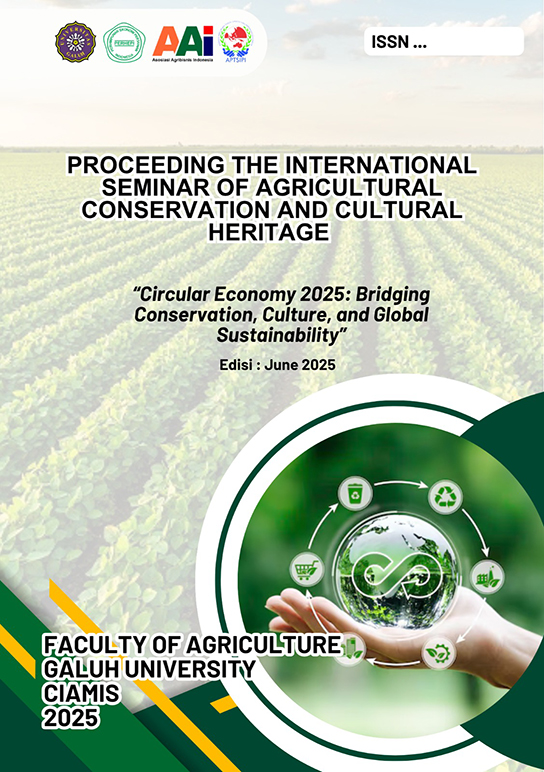ANALYSIS OF THE EVALUATION OF THE FARMER CARD PROGRAM FOR SUBSIDIZED FERTILIZER
(Case Study: Gegerbitung District, Sukabumi Regency)
Keywords:
Farmer Card; Subsidized Fertilizer;Abstract
One of the important factors in increasing agricultural productivity is fertilizer. The farmer card program was launched by the government to facilitate the distribution of subsidized fertilizers to farmers. This research aims to analyze the effectiveness of the farmer card program in obtaining fertilizer subsidies in Gegerbitung District, Sukabumi Regency. The method used in this study is descriptive quantitative with a purposive sampling approach to 30 respondents who have a farmer's card. Data were successfully collected through questionnaires using Likert scale calculations. The farmer card has 3 indicators in facilitating farmers' access to fertilizers, namely program success, target success, and satisfaction with the program. The research results show that the use of the farmer card in Gegerbitung District is considered effective because it reached an average of 71.26%. However, behind that success, there are still many obstacles faced, especially in the timeliness of fertilizer distribution. The implications of this research indicate the importance of farmers' understanding of the using of farmer cards to minimize the challenges faced. In addition, cooperation between the relevant parties is also essential to make the transaction process easier and to ensure the program runs smoothly as expected.
References
1. N. Pellu, I. P. N. Damanik, and J. M. Luhukay, J. Agrosilvopasture-Tech 2, 479 (2023)
2. M. R. Daris Saputra, Fahri Ramadhan, 1 (2024)
3. M. Rais, Yusriadi, and Nurhaedah, La Geofrafia 19, 235 (2021) 4. R. S. Jorgi, S. Gayatri, and T. Dalmiyatun, Agrar. J. Agribus. Rural Dev. Res. 5, (2019)
5. O. Famela, L. Aditya Prayudhi, and Y. Zamrodah, Grafting J. Ilm. Ilmu Pertan. 13, 27 (2023)
6. Kementerian Pertanian, Direktorat Jenderal Prasarana Dan Sarana Pertan. 2020, 1 (2020)
7. S. W. Purwanza, W. Aditya, M. Ainul, R. R. Yuniarti, K. H. Adrianus, S. Jan, Darwin, B. Atik, P. S. Siskha, F. Maya, L. K. R. N. Rambu, Amruddin, S. Gazi, H. Tati, B. T. Sentalia, D. P. Rento, and Rasinus, Metodologi Penelitian Kuantitatif, Kualitatif, Dan Kombinasi (2022)
8. Sugiyono, 346 (2015)
9. D. Taluke, R. S. M. Lakat, A. Sembel, E. Mangrove, and M. Bahwa, Spasial 6, 531 (2019)
10. K. A. M. Jannah, U. Aiman, S. Hasda, Z. Fadilla, T. M. K. N. Ardiawan, and M. E. Sari, Metodologi Penelitian Kuantitatif Metodologi Penelitian Kuantitatif (2017) 11. M. . . Buton, R. . . Kaunang, and S. G. Jocom, Agri-Sosioekonomi 15, 159 (2019) 12. T. Nova, Y. Purnomo, Y. E. Fathurrohman, F. Pertanian, and T. Pangan, 7, (2024) 13. K. Tani, D. Bidang, K. Pangan, and D. A. N. Agribisnis, (2020) 14. W. N. Azhari, 3 (2018)
15. E. Suhamah and K. Sumantri, J. Sustain. Agribus. 3, 16 (2024)


